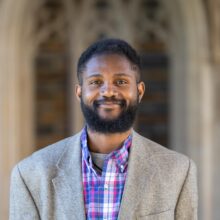
|
|
During my Spring 2024 student teaching experience at a public high school in Durham, I had an English language learner (ELL) in my African American Literature class who spoke Spanish and could only say a few words in English. Before I left Nigeria for the United States for my Master of Arts in Teaching program at Duke University, I had only interacted and taught in schools where students were bilingual or only spoke English. As an international student-teacher, I only hoped I had the best approach to make her part of my class just like every other student.
My experience and hers in the classroom could have been better despite trying all I could, including differentiating my lessons to accommodate her. Most of the time she was disengaged from informal class participation. After my spring internship, there was every need to reflect. That reflection birthed an approach for ELLs that I call the Studio Model.
The Studio Model
English language learners sometimes withdraw from vocal expression in the classroom and school environment due to their inability to communicate and express themselves fluently in English. Beyond speech, most of them eschew creative writing submissions, which are periodically open in the school for students. Over time, teachers and educational scholars have modeled approaches to assist this group of learners in attaining proficiency and confidence in their English skills. Despite the goal of ELLs to speak English like native speakers, it is imperative that educators, among other methods, proactively set up a growth mindset classroom that prioritizes trials over perfection.
Further, there is a difference between when an English language learner hesitantly answers questions directed at them from the teacher or classmates, and when such a student has an unflinching zeal to respond to questions, raise discussion questions, and facilitate breakout groups in the classroom. The latter requires some confidence, which comes not from the student’s ability to communicate in English, but the welcoming, encouraging, and supportive environment created in the classroom by the teacher and fellow students.
In proposing the Studio Model, I compare the classroom to a recording studio.
A recording studio is a facility for sound recording, including vocalists. The recording studio has the right equipment to support the vocalist, such as a pop filter attached to the microphone to filter the voice. With that support in place, vocalists — even ones with a not-so-great voices — are confident enough to give their best with the sound engineer’s reassuring “We got you!” look. The environment created by the engineer helps the vocalist improve regardless of how they started.
How (and why) to build a ‘studio’
The “studio” metaphor for a safe classroom means that the teacher and every class member learn to amplify and filter the voices of marginalized students such as ELLs. Like the sound engineer, the teacher must model encouraging and growth mindset comments so students spontaneously use them when ELLs struggle to communicate in English. Here are suggested comments that the teacher and class members can use with one another, especially for ELLs:
- Go ahead, you got this!
- Intriguing, tell me more!
- I’m happy to see how you’ve improved!
- I’m curious to know what you think
- I love your accent!
- Did you mean to say…
- [Nod in affirmation while they speak]
- [Help them complete some words/statements]
Building this growth mindset culture across the school not only welcomes English learners to practice their speech, but also opens the space for them to own a voice. In this context, “voice” refers not only to the sounds humans make to communicate through speech and songs, but also to the opinions and rights individuals assert. This broader understanding of “voice” is particularly relevant in advocacy that encourages all individuals — including young people, women, and marginalized minorities — to speak up.
Immigrant students in American public schools carry beautiful and intriguing stories yet to be told. Educators can help ELLs build the confidence to tell their stories, and overcome any perceived dejection from an audience that may hold divergent cultural and linguistic beliefs.
Imagine a classroom that’s embraced the Studio Model, where marginalized voices and ELLs can extend their confidence by safely practicing their English and integrating their cultural identity into storytelling. When their stories are told in English — without losing their originality — they can enrich classrooms, school journals, and other publications, and eradicate the stereotypes pushed on immigrants or ELLs.

